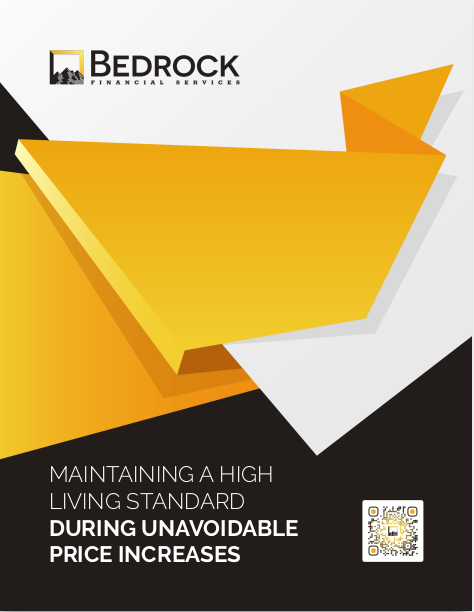Key Takeaways
-
Clients don’t need a crash course in insurance; they need familiar anchors, relatable comparisons, and visuals that match their level of financial literacy.
-
The most effective way to retain attention is to build around what clients already care about—security, family, and control—then translate policy features into those terms.
Why Simplicity Isn’t the Same as Dumbing It Down
You’re not trying to turn clients into insurance experts. What you’re really doing is helping them make informed decisions without feeling overwhelmed. That starts with one principle: simplicity without condescension.
In 2025, clients expect transparency, clarity, and personalization in every service—including financial planning. That expectation puts pressure on you to adapt your communication style to be both clear and engaging.
Clients don’t lose attention because they’re uninterested. They lose attention because the way insurance is explained often creates distance rather than clarity. Policies are full of terms that feel irrelevant until a crisis hits. Your job is to make those terms feel like everyday decisions. That means focusing less on the technicalities and more on meaningful implications: how a policy supports the life they want to protect.
Today’s clients are used to making fast decisions with limited information. They don’t want to be spoon-fed jargon. They want to be guided toward clarity. So your role becomes less about lecturing and more about filtering: giving them just enough of what matters, at the right time, in the right tone.
Shift from Education to Orientation
Rather than trying to teach every detail, think about orientation. When you onboard a client, they don’t need to know everything right away—they just need to understand where they are and what their next step should be.
This is especially true in areas like life insurance, long-term care, or income protection. Instead of explaining riders and premiums upfront, start by asking:
-
What are you most concerned about today?
-
Who relies on you financially?
-
If something unexpected happened tomorrow, what would you want taken care of first?
Once you hear the answer, translate the relevant policy feature into that context. Orientation replaces lecture with relevance—and clients stay tuned in.
You can go even further by showing a brief roadmap of what they’ll learn over time. Break the journey into simple phases:
-
First, identify what’s at risk.
-
Second, understand available options.
-
Third, match policies to real-life goals.
That framework keeps them engaged without expecting them to master the entire insurance landscape all at once.
Use Familiar Frameworks to Anchor New Ideas
Abstract financial concepts stick best when they connect to something familiar. That’s why analogies, metaphors, and narrative framing are your best allies.
Here are a few structures that help you anchor complex insurance ideas:
1. Risk as Routine
Most clients already manage risk in their daily lives—seatbelts, smoke detectors, security systems. Frame insurance in the same category: a protection mechanism they hope they never need, but feel safer having.
Add a narrative: “Just like you install a home alarm not because you expect a break-in, but because the cost of not having it is too high.”
2. Premiums as Budget Lines
Instead of calling it a premium, frame it as a predictable monthly decision in the same line as rent or groceries. In 2025, subscription models are part of nearly every aspect of life. Insurance fits in that pattern. This makes the cost feel manageable, not mysterious.
Also emphasize the long-term savings versus out-of-pocket costs when unprotected. The point isn’t just spending—it’s controlling outcomes.
3. Policies as Promises
Shift the perception from a pile of paperwork to a promise: If you do this now, your family won’t have to scramble later. That emotional anchor keeps your clients engaged far more than a policy illustration ever could.
Use emotionally resonant language: “This isn’t a document. It’s peace of mind packaged into paper.”
Visuals Make Abstract Ideas Stick
Most people are visual learners—even the analytical ones. If you aren’t already using diagrams, sketches, and basic charts in your meetings, you’re missing one of the easiest ways to hold attention.
Here are three quick wins for 2025:
-
Timeline Visuals: Show how a policy evolves over time. Map out the difference between short-term, mid-term, and lifetime benefits.
-
Decision Trees: Use simple flowcharts to show options: “If you want this, then you might choose that.” It makes complexity digestible.
-
Side-by-Side Breakdowns: Compare two policy types or strategies in a clean, minimal layout. Highlight what stays the same and what changes.
These aren’t just sales aids. They’re clarity tools. They make the abstract concrete and keep your client’s attention where it belongs.
You can even create short explainer reels or animated slides if you present virtually. In-person or online, visuals make retention easier.
Make the Conversation Emotional, Not Transactional
In a data-heavy industry, emotional intelligence is your superpower. You’re not just explaining features—you’re connecting decisions to your client’s values.
Here’s how to structure that more emotionally grounded conversation:
Start With the Story
Ask your client what their biggest fear is when it comes to finances. Or what they want their family to remember about them. These questions get them thinking beyond numbers—and make the need for insurance feel real.
You can also ask, “What does peace of mind look like for you?” The goal is to surface emotions, then connect the solution directly.
Tie Back to the Outcome
When you present a policy, don’t lead with cost. Lead with peace of mind:
-
“This protects the income your family depends on.”
-
“This means your children won’t inherit debt.”
-
“This ensures your retirement isn’t derailed by medical costs.”
And then let the client reflect on what that outcome would mean in their life. They’ll often verbalize the value before you need to.
You’ve now moved from a transactional pitch to a values-based conversation—and that’s when your clients actually start to care.
Don’t Dump Everything at Once
Even the most attentive clients have limited bandwidth. So pace the delivery.
Break your information into digestible stages:
-
Meeting 1 – Priorities and Risk Exposure: Explore their goals and identify gaps.
-
Meeting 2 – Strategy Options: Present two or three aligned solutions.
-
Meeting 3 – Fine-Tuning and Questions: Focus on specifics, beneficiaries, and implementation timelines.
For some clients, you might need a fourth follow-up session just to answer lingering questions. And that’s okay. The more confidence you build through pacing, the more likely they are to move forward.
In 2025, attention spans aren’t shrinking—they’re just more selective. The solution isn’t to cram more into one meeting. It’s to be more strategic about what you present and when.
Be Transparent About What They’re Getting and What They’re Not
One of the most effective attention-holding techniques is trust—and trust comes from clarity.
If a policy has limits, exclusions, or requires future reviews, be upfront. Let clients know:
-
What the policy covers today
-
What could change in five or ten years
-
What they’ll need to keep an eye on
Transparency doesn’t push clients away. It draws them in. When you act like a partner instead of a pitch person, they stay engaged.
Transparency also helps eliminate buyer’s remorse—one of the key reasons people disengage. If they feel prepared for the realities of a policy, they’re more likely to stay engaged, renew coverage, and refer others.
Repetition Without Redundancy
People don’t retain information the first time they hear it—especially if they’re stressed or distracted. But repeating yourself doesn’t mean being boring.
Reinforce key messages in multiple ways:
-
Recap at the end of meetings.
-
Send short follow-up summaries.
-
Use visuals to reinforce verbal points.
-
Offer optional guides or explainer content.
You can also include a client-friendly recap sheet that summarizes policy types, costs, and their intended purpose. By layering your repetition, you’re helping clients absorb concepts through multiple entry points.
Make sure that repetition is supportive, not overwhelming. Your clients should feel like the message is sticking—not that they’re being bombarded.
Anchor Ongoing Engagement Through Small Wins
Engagement doesn’t stop after a signature. Build long-term relationships by focusing on micro-moments of progress:
-
A quick annual check-in.
-
A short update when policy terms evolve.
-
A reminder about life changes that could impact coverage.
In 2025, clients want to feel proactive—not reactive. You can offer that with consistent touchpoints that keep them confident and aware without needing constant hand-holding.
Even a birthday note or policy anniversary card can reignite the connection and make them feel cared for—not just sold to. Those small gestures build loyalty.
Your Role Isn’t Just to Explain—It’s to Translate
At its core, your value as a financial professional comes down to translation. You’re turning complex risk management concepts into decisions clients actually want to make.
The easiest way to lose someone is to overwhelm them. The easiest way to keep them is to reflect their concerns back to them in everyday language, using formats they already understand.
We built Bedrock Financial Services to support exactly this kind of communication. Whether it’s training, marketing tools, or visual content libraries, we give professionals like you what you need to educate and engage—without losing your audience halfway through.
Sign up today and let us help you do more of what works.







